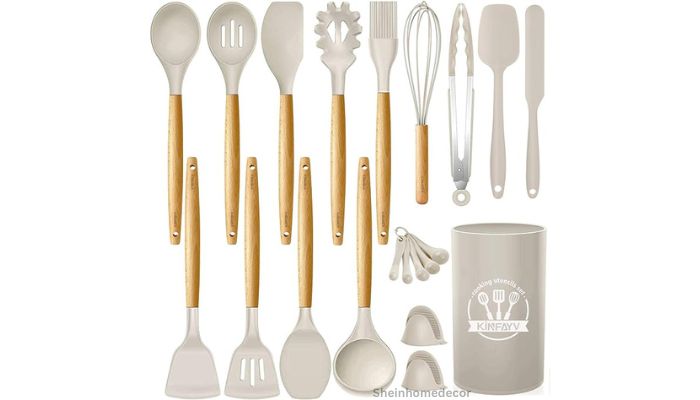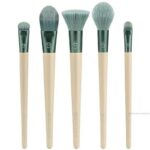Table of Contents
With the rise in awareness of toxic chemicals in everyday products, many people are looking to equip their kitchens with non-toxic cooking utensils. Choosing cookware made from safe, natural materials can reduce your exposure to potentially harmful substances that could leach into your food. Here’s a guide to selecting the best non-toxic pots, pans, and other kitchen tools for healthy, home-cooked meals.
Look for Natural Materials Non Toxic Cooking Utensils
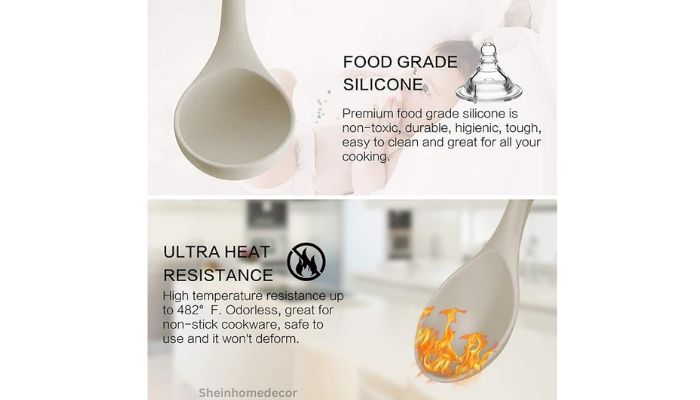
When evaluating the safety of cookware, the material it’s made from is one of the most important factors. Some synthetic materials like non-stick coatings or plastics can release toxins when heated, especially if scratched or damaged. Instead, look for Non Toxic Cooking utensils made from these more natural, non-toxic options:
Stainless Steel: This classic material resists corrosion, warping, and wear over time. Opt for 18/10 stainless steel with an aluminum or copper core for even heating. The metals are naturally corrosion-resistant and non-toxic.
Cast Iron: Traditional cast iron pots and pans leach small amounts of iron into food, which can be beneficial for those lacking this nutrient. Seasoned properly, cast iron creates a non-stick surface without the need for potentially toxic coatings.
Ceramic or Enameled Cast Iron: For Non Toxic Cooking Utensils without chemical coatings, choose ceramic or enameled cast iron. The glass-based enamel creates a smooth surface that keeps food from sticking.
Copper: This material heats quickly and evenly. Make sure to get tin-lined copper cookware, as untinned copper can react with acidic foods. The thin layer of tin protects the copper surface.
Glass: From baking dishes to mixing bowls, glass is naturally non-toxic and inert. Borosilicate glass can withstand rapid temperature changes and is an excellent choice for cookware.
Silicone: Flexible, heat-resistant silicone Non Toxic Cooking utensils are non-stick and stain resistant. Food-grade silicone won’t leach chemicals with proper use and care.
Wood: Sustainably-sourced wood cutting boards, spoons, and Non Toxic Cooking utensils are naturally non-toxic. Look for untreated wood or pieces finished with food-safe oils.
Titanium: This ultralight metal is highly durable and resistant to corrosion. Anodized titanium cookware creates a non-stick barrier while avoiding potentially toxic coatings.
Avoid These Materials
On the flip side, here are some common cookware materials to avoid due to potential toxicity risks:
- Non-Stick Coatings – Chemical non-stick coatings like Teflon can scratch and flake over high heat, releasing toxins. Even when intact, compounds can leach out during Non Toxic Cooking Utensils
- PVC Plastics – Items like plastic wraps and bottles can leach phthalates and other harmful chemicals into food, especially when heated.
- Melamine – This lightweight plastic exposed to heat can release formaldehyde, a known human carcinogen. Avoid melamine dishes.
- Aluminum – Uncoated aluminum pots and pans can leach into acidic foods. Anodized aluminum is safer, as is stainless steel layered with aluminum for conductivity.
- Plastic Utensils – Even BPA-free plastic can leach estrogenic chemicals when scratched, damaged, or heated. Choose wood, bamboo, or silicone instead when possible.
- Enamelware – Vintage enamelware pots and pans contain lead-based paints. Don’t use old, chipping enamelware. Newer enameled cast iron is safer.
Choose Quality Construction
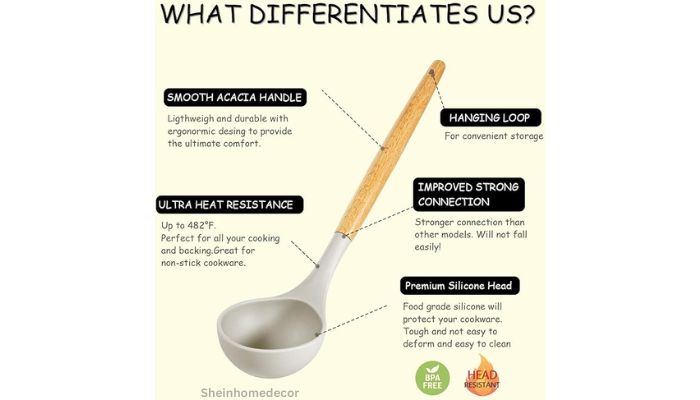
The build quality and design of non-toxic kitchenware also impacts its safety. Look for:
- Solid construction – Heavier, more solidly constructed pans heat better and last longer. Lightweight materials can contain more toxins.
- Tight-fitting lids – Well-fitting lids retain nutrients and moisture and allow use of less Non Toxic Cooking Utensils oil.
- Helper handles – Pots and pans with helper handles redistribute weight for easier lifting.
- Rolled edges – Smooth, rolled rims on pots and baking sheets prevent snags and cuts during use.
- Ergonomic, stay-cool handles – Handles that resist heat transfer prevent burns. Ergonomic grips reduce strain.
- Easy to clean surfaces – Smooth, non-porous materials are simpler to clean thoroughly.
- No plastic parts – Metal or wood handles and knobs are safer than plastic, which can melt from the heat.
- Eco-Friendly Practices
- For the most natural, non-toxic cookware, also consider the manufacturing process and sourcing of the materials. Here are signs of eco-friendly practices:
- Sustainably sourced materials – Look for manufacturers using recycled metals, FSC-certified wood, and other ethical sourcing.
- Responsible manufacturing – Companies with good labor and environmental practices help minimize your products’ impact.
- Non-toxic coatings – Powder coatings, silicone oil finishes, beeswax, and other food-safe applications create non-stick ability without PFOAs.
- Locally produced – Support small businesses and cut down on transport emissions by buying locally made kitchenwares.
Use and Care for Non-Toxic Cookware Utensils
Once you’ve acquired healthy, non-toxic pots, pans, and utensils, proper use and care help maintain their safety. Keep these tips in mind:
- Season pots and pans properly – Follow manufacturer instructions to gradually heat and oil new pots and pans for an optimal non-stick patina.
- Don’t overheat – Avoid burning food and charring pans, which can release fumes from coatings.
- Prevent scratches – Use wooden spoons and sponges to avoid scraping off non-stick surfaces.
- Check for wear – Replace worn pans with scratched, peeling, or damaged coatings to prevent ingestion of bits.
- Clean thoroughly – Wash cookware by hand or dishwasher carefully after each use, avoiding harsh scouring pads.
- Rinse acidic foods – Don’t let citrus, vinegar, or tomatoes sit; rinse right after Non Toxic Cooking Utensils.
- Store carefully – Hang pots and pans or place protectively in cabinets to prevent dents and scratches in storage.
- Consider liners – Using parchment paper or silicone liners provides an extra non-stick buffer when Non Toxic Cooking Utensils cooking delicate foods like eggs or fish.
If keeping your Non Toxic Cooking Utensils tools free of potentially harmful chemicals is a priority for you, following these tips can help you outfit your kitchen with safe, high-quality, non-toxic pots, pans, bakeware, and Non Toxic Cooking Utensils. Taking the time to make informed materials choices and properly care for your cookware helps protect your health and makes home cooking a pleasure.
Common Myths About Non-Toxic Cookware Utensils
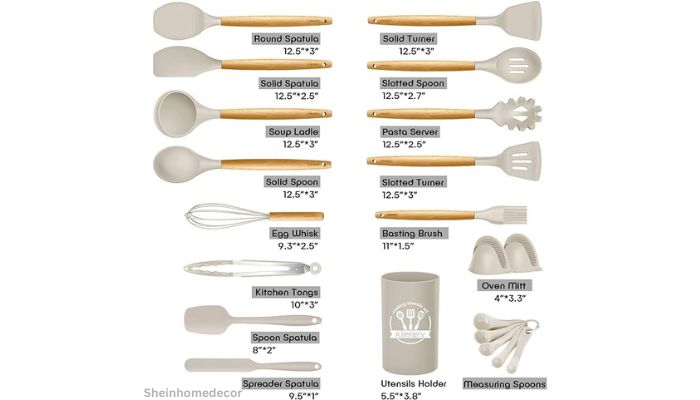
With all the conflicting information surrounding non-toxic cookware it can be tricky separating fact from fiction. Here are some common myths debunked:
Myth: Ceramic coatings are harmless alternatives to Teflon.
Fact: Porous ceramic surfaces require PTFE and PFOA to create non-stick ability. Safer options include enameled cast iron or stainless steel.
Myth: Silicone cookware can withstand extremely high heat.
Fact: Although silicone is stable up to about 400°F, under higher heat it can leach chemicals. Reserve for baking versus stovetop Non Toxic Cooking Utensils.
Myth: Copper cookware is highly reactive and unsafe.
Fact: The reactive nature of copper means it needs a lining, but tin-lined copper is completely inert and heats beautifully.
Myth: Stainless steel has no health risks.
Fact: Uncoated stainless steel can still leach trace metals like nickel and chromium. Opt for higher-grade 18/10 stainless.
Myth: Enamelware contains lead.
Fact: While vintage enamelware had lead-based paint, modern vitreous enamel coatings are non-toxic and lead-free.
Myth: Non-stick equals toxic.
Fact: PFOA-based non-stick coatings can be harmful, but safer options like seasoned cast iron or ceramic-infused stainless steel allow Non Toxic Cooking Utensils
Myth: Aluminum cookware is linked to Alzheimer’s.
Fact: Studies showing a correlation between aluminum and Alzheimer’s are outdated and have been disproven. Anodized aluminum is considered safe.
Myth: Scratches make non-stick coatings dangerous.
Fact: Scratches do increase the risk of PFOA flaking into food. But with ceramic-infused stainless steel for example, scratches don’t affect the non-stick properties.
By understanding what makes for truly non-toxic cookware versus simply avoiding known hazards like Teflon, you can outfit your kitchen confidently. Don’t buy into these common myths—look for natural materials made safely.
Non-Toxic Cookware Utensils Brands
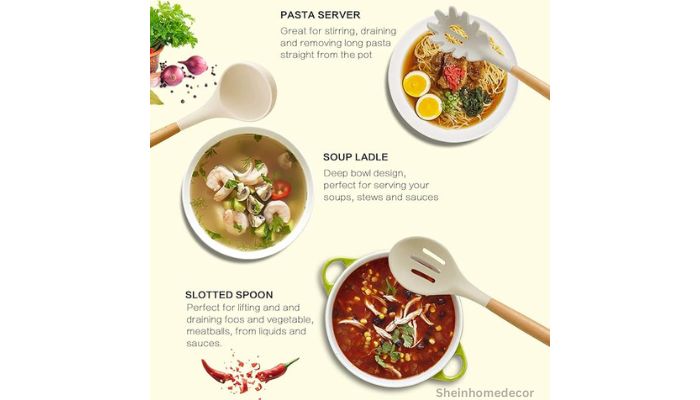
Today more and more companies are offering eco-conscious non-toxic pots and pans made from safe, durable materials. Here are some top recommended brands to check out:
- GreenPan – Their Thermolon ceramic non-stick coatings are free of PFOAs and toxic chemicals.
- Cuisinel – These cast iron enameled pots come in bright colors and offer an excellent Non Toxic Cooking Utensils surface.
- Zwilling – Their ceramic cookware uses no PTFE/PFOAs and features stay-cool handles and drip-free rims.
- Ozeri – Their frying pans utilize a proprietary stone-derived coating called Greblon, free of PTFE/PFOAs.
- T-fal – Opt for their stainless steel cookware lines made without PFOAs or toxic coatings.
- USA Pan – Offering commercial grade stainless steel and aluminum bakeware made in America.
- Lodge – Known for their high-quality seasoned cast iron skillets and dutch ovens.
- Le Creuset – Enameled cast iron pots made in France available in a rainbow of colors.
- All-Clad – Respected for their durable, high-performing bonded and layered stainless steel cookware.
- Scanpan – Their ceramic titanium non-stick lines boast green manufacturing and a PFOA-free surface.
- Caraway – Specializing in chemical-free ceramic coated pans in trendy hues.
Safe ceramic coatings, durable stainless steel, timeless cast iron, and enameled options free of toxic chemicals make these brands leaders in safer, non-toxic cookware. Their products are designed to last while keeping your food free from harmful compounds.
What to Avoid When Buying Non Toxic Cookware Utensils
Just as important as knowing what to look for is knowing what to avoid when evaluating non-toxic cookware options. Steer clear of these traits:
- PTFE/PFOA/PFOS non-stick coatings – Teflon and similar synthetic non-sticks contain perfluorinated compounds linked to health issues.
- Dark non-stick surfaces – Darker coatings tend to contain more PTFE and related chemicals than lighter ceramic-style coatings.
- Thin, lightweight pans – Light pans often warp and de-laminate quickly. Heavier-duty materials are more durable and stable.
- Plastics – Silicones and nylons can leach chemicals, especially under heat. Opt for wood, metal, or glass kitchen tools instead.
- Melamine – This plastic leaches formaldehyde when heated. Avoid melamine dishes.
- Materials made in China – Lax environmental regulations mean Chinese-made cookware often contains toxins and lacks safety testing.
- Enamelware with chipping – Chips in enamel finishes can expose underlying toxins. Avoidusing damaged vintage enamelware.
- Aluminum without anodizing- Uncoated aluminum can leach into acidic foods. Look for anodized aluminum or stainless layered with aluminum.
- Copper without tin lining – Untinned copper reacts to foods. Make sure copper has a tin or stainless steel interior.
- Non-existent customer service – Reputable brands stand behind their healthy products if issues arise.
By steering clear of these red flags, you can feel confident you’re selecting truly non-toxic cookware for your kitchen that’s built to last.
Non Toxic Cooking Utensils Buying Guide
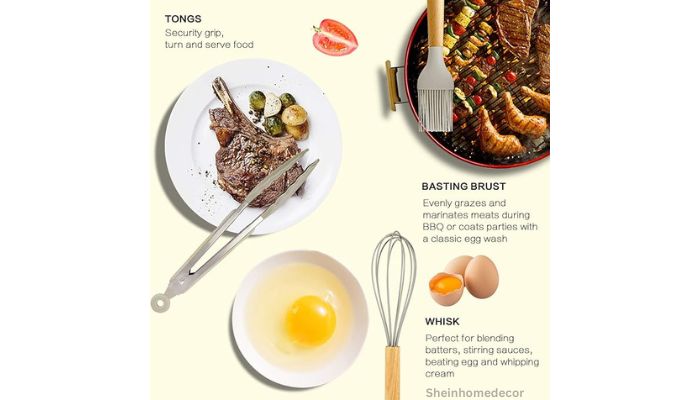
Ready to start shopping for safer non-toxic pots, pans, and bakeware? Keep this buying guide in mind as you evaluate your options:
- Materials – Focus on natural options like stainless steel, cast iron, glass, and ceramic. Avoid Teflon and plastic.
- Construction – Seek solid, evenly heating pieces from responsible manufacturers.
- Price – Expect to invest more upfront for non-toxic cookware over cheap but toxic versions.
- Purpose – Match cookware to your Non Toxic Cooking Utensils needs. Example: ceramic non-stick for eggs, stainless steel for browning meat.
- Versatility – Look for pieces like stockpots and griddles that allow you to cook diverse dishes.
- Handles – Ensure handles are made of wood, metal, or heat-resistant silicone.
- Lids – Well-fitting lids seal in moisture and nutrients. Glass lids let you monitor food.
- Oven/Dishwasher Safety – Ensure cookware is oven safe and dishwasher compatible if needed.
- Company Reputation – Stick to reputable brands that stand behind their non-toxic products.
- Sizing – Make sure pans aren’t too big for your stovetop burners to maximize efficiency.
Although it may seem daunting at first, outfitting your kitchen with non-toxic cookware boils down to understanding materials and choosing quality over quantity. Invest wisely in a few eco-conscious pieces suited for your specific Non Toxic Cooking Utensils tasks. In the long run, your health is worth it!
Non Toxic Cooking Utensils Sets to Buy
For those seeking a full suite of safer pots and pans in one purchase, some excellent non-toxic cookware set options exist. Here are a few recommended sets:
GreenPan Paris Pro Healthy Ceramic Non-Stick 10-Piece Cookware Set – Anodized aluminum exterior and Thermolon ceramic non-stick interior make for healthy Non Toxic Cooking Utensils. Dishwasher safe.
Cuisinel Cast Iron 11-Piece Cookware Set – Pre-seasoned cast iron pots and pans come in fun colors. Naturally non-stick and even-heating.
BulbHead Red Copper 10 PC Copper-Infused Ceramic Cookware Set – Features ceramic-coated copper pans ideal for induction Non Toxic Cooking Utensils. PTFE and PFOA-free.
T-fal Ultimate Stainless Steel Copper-Bottom Cookware Set – Heat-conductive copper bottoms on scratch-resistant stainless pans. Dishwasher and oven safe.
Zwilling Spirit 3-ply Stainless Steel 10-Piece Cookware Set – Tri-ply stainless construction with aluminum core heats quickly and evenly.
GreenLife Soft Grip 16-Piece Ceramic Non-Stick Cookware Set – Durable ceramic surface reinforced with a mineral-infused coating. Thermal shock resistant.
Lagostina Martellata Stainless Steel Tri-ply 10-Piece Cookware Set – Commercial-grade 18/10 stainless steel pots and pans with copper externals.
All-Clad Essentials Non-Stick 10-Piece Cookware Set -features scratch-resistant, PFOA-free ceramic coating on hard-anodized aluminum.
Rachael Ray Cucina Non-stick 12-Piece Cookware Set – Earthy-colored enamel porcelain exterior with durable aluminum interior. Non-stick without PFOAs.
Any of these well-rounded sets offer an excellent starter range of safe, non-toxic pans and pots for outfitting your kitchen with healthy cookware.
Non-Toxic Alternatives for Cooking Tasks
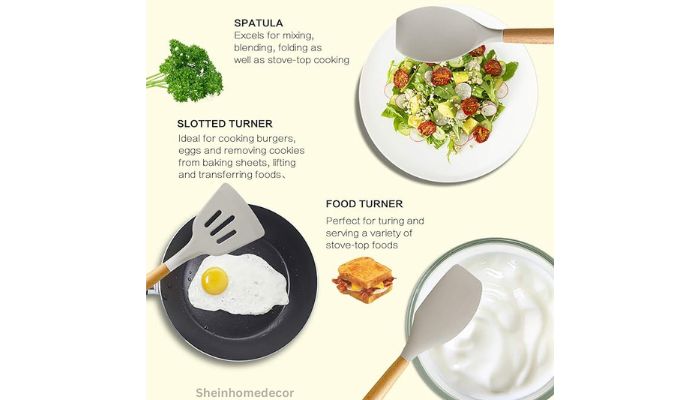
Rather than replacing your entire existing kitchenware collection, a more budget-friendly approach may be to swap out select toxic pots and pans for key Non Toxic Cooking Utensils tasks.
Here are some suggested non-toxic alternatives for common Non Toxic Cooking Utensils jobs:
- Eggs – GreenPan original ceramic non-stick egg pan or Zwilling ceramic omelette pan.
- Browning Meat – Lodge cast iron pan or Ozeri Greblon stone frying pan.
- Simmering Sauces – Zwilling Forte stainless steel sauce pot with glass lid or Le Creuset enameled cast iron dutch oven.
- Baking – USA Pan non-toxic aluminum baking sheet or Pyrex glass baking dishes.
- Roasting – Cuisinart non-stick roaster or All-Clad stainless roasting pan with lid.
- Griddling – Lodge reversible cast iron griddle/grill pan.
- Steaming – Cuisinart stainless steel steamer pot or Anolon Nouvelle copper stainless steamer.
- Frying – GreenPan Valencia Pro stainless steel fry pan/skillet or Scanpan CTX ceramic titanium fry pan.
By identifying the types of cookware that concern you most for potential chemical leaching, targeting replacements for those high use tasks can create a safer kitchen environment on a budget.
Safe Non Toxic Cooking Utensils Is an Investment in Your Health
Like many kitchen upgrades, creating a truly non-toxic cookware collection requires some upfront investment. But when it comes to the health of you and your family, safe pans and pots designed to last are worth it.
Taking the time to educate yourself on materials and evaluate options responsibly means your cookware will serve you well for years or even decades to come. Go beyond simply avoiding Teflon to seek out natural materials like stainless steel, cast iron, and ceramic from reputable sustainable brands.
Outfit your kitchen with a core lineup of versatile, non-toxic pots and pans adapted to your unique Non Toxic Cooking Utensils needs. Then get ready to whip up healthy, home-cooked meals the whole family can safely enjoy.
